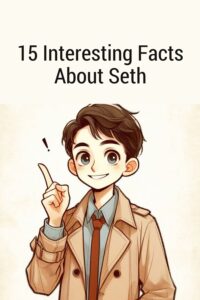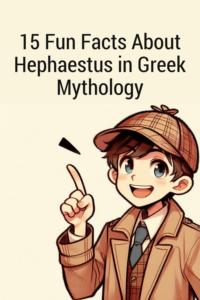Introduction:
In Norse mythology, Odin is known as the All-Father and the god of wisdom, war, and poetry. He is a complex deity with many fascinating stories and attributes. Today, we will explore 15 intriguing facts about Odin that showcase his importance and influence in ancient Norse culture.
Fact 1: Odin’s Origins
Odin is believed to be one of the oldest gods in the Norse pantheon. He is often associated with the Proto-Indo-European god *Wodanaz, who was a sky god and a war god. Odin’s origins can be traced back to various ancient cultures, showing his enduring mythological significance.
Fact 2: Odin’s Eye Sacrifice
One of the most well-known stories about Odin is the sacrifice of his eye to gain wisdom. According to Norse mythology, Odin sacrificed his eye by throwing it into the well of Mimir in exchange for knowledge of the cosmos. This act symbolizes Odin’s willingness to make sacrifices for wisdom and greater understanding.
Fact 3: The Valknut Symbol
Odin is often associated with the Valknut symbol, which consists of three interlocking triangles. This symbol has been found on various artifacts and runestones throughout Scandinavia and is believed to represent Odin’s power over life and death. The Valknut is a potent symbol of Odin’s warrior spirit and his role as a bringer of victory in battle.
Fact 4: The Wild Hunt
Odin is also linked to the Wild Hunt, a terrifying procession of ghostly riders that sweeps across the night sky. In Norse mythology, Odin leads the Wild Hunt in search of souls to bring to the afterlife. This spectral army is said to appear during times of war or great upheaval, signaling Odin’s presence and influence in mortal affairs.
Fact 5: Odin’s Ravens
Odin is accompanied by two ravens, Huginn and Muninn, who serve as his messengers and scouts. These intelligent birds fly across the world to gather information and wisdom for Odin. Huginn represents thought, while Muninn represents memory, symbolizing Odin’s omniscience and keen intellect.
Fact 6: The Einherjar
Odin is also the ruler of Valhalla, the legendary hall where fallen warriors are taken after death. These warriors, known as the Einherjar, are chosen by Odin to fight alongside him during Ragnarok, the apocalyptic battle that will end the world. Valhalla is a place of honor and glory for those who die valiantly in battle.
Fact 7: The Valkyries
Odin is closely associated with the Valkyries, fierce warrior maidens who choose the slain warriors to bring to Valhalla. These powerful women serve Odin faithfully, carrying out his will and ensuring that the bravest fighters find their place in the halls of the gods. The Valkyries are a vital part of Odin’s divine retinue and play a crucial role in Norse mythology.
Fact 8: The Gungnir Spear
Odin wields the mighty Gungnir spear, a weapon of great power and significance. This magical spear never misses its target and is a symbol of Odin’s authority and command. Gungnir is often depicted in Norse artwork and mythology as a potent symbol of Odin’s martial prowess and divine authority.
Fact 9: Odin’s Horse, Sleipnir
Odin rides a majestic eight-legged horse named Sleipnir, who is said to be the fastest and most agile steed in all the nine realms. Sleipnir is a mythical creature of incredible speed and stamina, capable of traversing great distances in the blink of an eye. Odin’s bond with Sleipnir highlights his connection to the natural world and his ability to travel between realms.
Fact 10: Odin’s Wolves
In addition to his ravens, Odin is also accompanied by two wolves, Geri and Freki, who are his loyal companions and guardians. These fierce wolves represent Odin’s wild and untamed nature, as well as his connection to the primal forces of the natural world. Geri and Freki are symbolic of Odin’s ferocity and strength as a warrior god.
Fact 11: Runes and Seidr Magic
Odin is often associated with the runes, ancient symbols of power and knowledge that are used for divination and magical purposes. Odin is also a master of seidr magic, a form of Norse sorcery that involves manipulating fate and reality. The runes and seidr magic are powerful tools that Odin uses to shape the world according to his will and vision.
Fact 12: The Mead of Poetry
According to Norse mythology, Odin discovered the Mead of Poetry, a magical elixir that grants the gift of poetic inspiration and wisdom. Odin went to great lengths to obtain the Mead of Poetry, undergoing various trials and challenges to secure this precious substance. The Mead of Poetry is a symbol of Odin’s creative power and his role as the god of poetry and eloquence.
Fact 13: Odin’s Association with Yggdrasil
Odin is closely linked to Yggdrasil, the World Tree that connects the nine realms of Norse cosmology. Yggdrasil is a sacred symbol of the interconnectedness of all things and the cyclical nature of life and death. Odin’s presence at the roots of Yggdrasil signifies his role as a cosmic guardian and overseer of the natural order.
Fact 14: The Prophecy of Ragnarok
Odin is fated to die during Ragnarok, the final battle that will end the world and pave the way for its rebirth. Despite this grim prophecy, Odin embraces his destiny with courage and resolve, knowing that his sacrifice is necessary for the renewal of the cosmos. Ragnarok is a central theme in Norse mythology, highlighting the cycle of creation, destruction, and rebirth that shapes the universe.
Fact 15: Odin’s Enduring Legacy
Odin’s influence extends far beyond the realm of mythology, as his image and symbols continue to resonate in modern culture. From literature and art to popular media and entertainment, Odin’s character and myths have inspired countless interpretations and adaptations. Odin remains a powerful archetype of wisdom, strength, and sacrifice, reminding us of the enduring power of myth and storytelling.
Conclusion
In conclusion, Odin is a multifaceted and enigmatic figure in Norse mythology, embodying a complex blend of wisdom, warlike prowess, and mystical power. Through his many stories and attributes, Odin continues to captivate our imaginations and challenge our perceptions of divinity and destiny. Whether as a wise counselor, a fearsome warrior, or a cosmic wanderer, Odin’s legacy endures as a testament to the enduring power of myth and the human quest for meaning and understanding in a mysterious world.
Subscribe to our email newsletter to get the latest posts delivered right to your email.




Comments